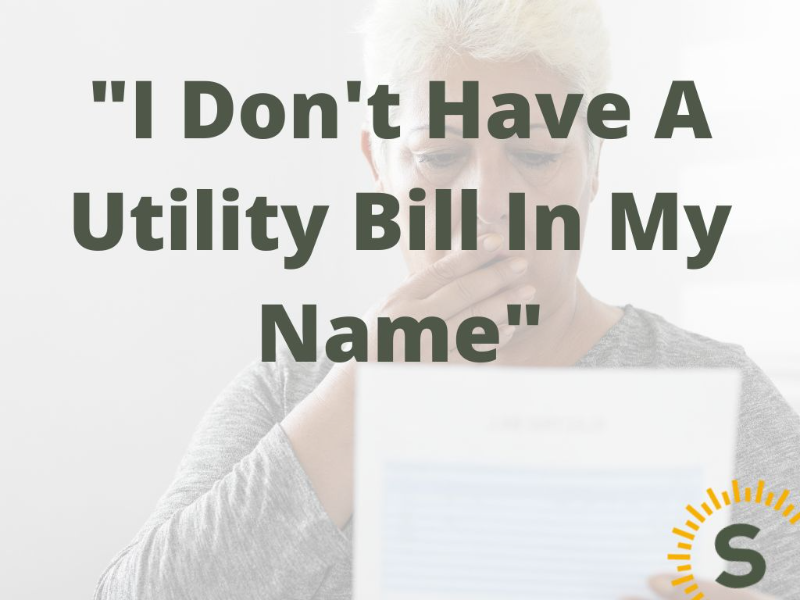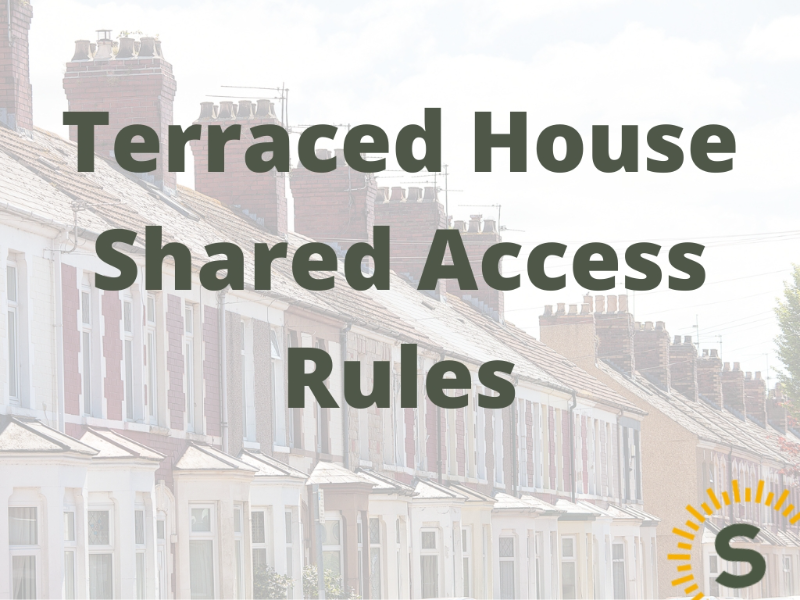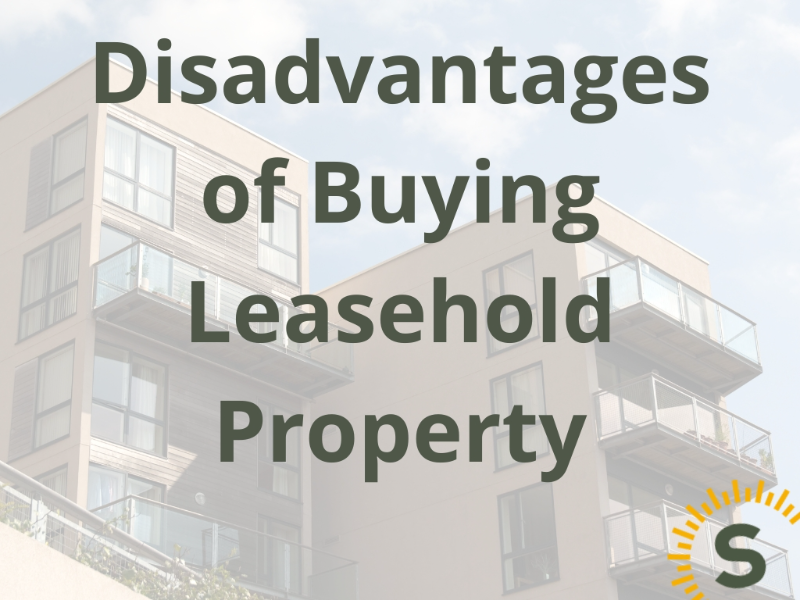
The LIFT Scheme (Low-cost Initiative for First Time Buyers) is a government-backed initiative in Scotland designed to help first-time buyers get onto the property ladder. The scheme is managed by the Scottish Government and is available to people who meet certain eligibility criteria.
Ready to take the first step towards owning your own home in Scotland with the LIFT scheme? Just fill out our simple Sunny Fact Find for First Time Buyers. We'll hook you up with the perfect adviser for your needs. Your adviser will give you a call to chat through how they can help you achieve home ownership. From then, the ball's in your court - you decide how to proceed!
Not sure if it's right for you? Just simply read on, we answer everything you need to know.
Under the LIFT scheme, first-time buyers can get help with buying a home in one of three ways:
Shared Equity: Under the Shared Equity scheme, the Scottish Government can provide you with an equity loan of up to 40% of the purchase price of a new build home, which means you only need to raise a 5% deposit and obtain a mortgage for the remaining 55%.
Shared Ownership: The Shared Ownership scheme allows you to purchase a share of between 25% and 75% of a property and pay rent on the remainder. You can gradually increase your ownership of the property over time through a process called 'staircasing'.
New Supply Shared Equity: This scheme is similar to Shared Equity, but it is designed specifically for newly built homes that are being sold by housing associations or developers who have received Scottish Government funding.
To be eligible for the LIFT scheme, you must be a first-time buyer, have a household income of less than £80,000, and be able to raise a deposit of at least 5% of the purchase price of the property you want to buy.
You can also be considered for the scheme if you are over 60, a social renter, disabled, a member of the armed forces, a veteran or a widow of a service professional.
There are also other criteria that you need to meet, such as being over 18 and being able to demonstrate that you can afford to meet the costs of buying and maintaining a property.
The LIFT scheme in Scotland can be a great way for first-time buyers to get onto the property ladder, but it's important to carefully consider whether it's the right option for you and seek advice from a professional if you're unsure.
Here are some of the key eligibility requirements for the LIFT scheme in Scotland:
To be eligible for LIFT, you must be a first-time buyer. This means that you have not previously owned a property, either in Scotland or elsewhere.
The LIFT scheme is designed to help people with lower incomes to buy their first home. As a result, there are income limits that apply to applicants. For example, in most cases, your household income cannot exceed £80,000 per year.
To be eligible for LIFT, you must be a resident of Scotland. This means that you must have a permanent address in Scotland and be able to demonstrate that you have lived there for a certain period of time.
To be eligible for LIFT, you must be able to raise a deposit of at least 5% of the purchase price of the property you want to buy.
As with any mortgage or loan application, your credit history will be taken into account when you apply for LIFT. This means that if you have a poor credit history or a history of missed payments, you may not be eligible for the scheme.
You must be able to demonstrate that you can afford to make the repayments on your mortgage and other associated costs, such as maintenance and insurance.
It's important to note that there may be other eligibility requirements that apply depending on the specific LIFT scheme you are interested in, such as age restrictions or property type requirements. Therefore, it's essential to carefully review the eligibility criteria for any scheme you are considering and seek advice from an adviser and request a mortgage promise if you're unsure about your eligibility.
To make a decision on how to proceed, you should always seek advice. However, it's important you understand how the schemes differ.
In a shared equity scheme, you own a portion of the property, and the Scottish Government (or another housing provider) owns the remainder. You pay a mortgage on the portion of the property you own, and you pay rent on the portion that the government owns. The share of the property that you own can be as little as 60%, with the remaining 40% owned by the government.
In a shared ownership scheme, you own a percentage of the property (usually between 25% and 75%), and you pay a mortgage on that portion. You also pay rent on the portion that you don't own. You can usually buy additional shares in the property over time, until you own the entire property outright.
New Supply Shared Equity (NSSE) is a type of shared equity scheme that is specifically designed to help first-time buyers and priority groups (such as disabled or elderly people) purchase a new-build home. Here's how it works:
NSSE differs from other LIFT options in a few key ways. Here are some of the key differences:
Overall, NSSE can be a good option for buyers who are specifically looking to purchase a new-build home and who meet the eligibility criteria. However, it's important to carefully consider the terms of the scheme and to speak with a financial advisor or housing expert to determine if it's the right fit for you.
Here's what you can expect when applying for the LIFT scheme in Scotland:
Before applying, it's important to make sure you meet the eligibility criteria for the specific LIFT option you're interested in. You can find information on eligibility requirements on the Scottish Government's website, or by speaking with a LIFT-approved financial advisor.
Once you've determined that you're eligible for the scheme, you'll need to find a property that meets the requirements of the specific LIFT option you're interested in. For example, if you're interested in the NSSE scheme, you'll need to find a new-build property that's eligible for the scheme.
You'll need to obtain a mortgage for the share of the property you'll be purchasing. This can be done through a lender of your choice, or through a lender recommended by the LIFT-approved financial advisor.
Once you've found a property and obtained a mortgage, you'll need to complete an application for the specific LIFT scheme you're interested in. The application will ask for information about your income, employment status, and other relevant details.
After you've submitted your application, it will be reviewed by the LIFT scheme administrator. The approval process can take several weeks to several months, depending on the volume of applications being processed and the specific LIFT option you're applying for.
If your application is approved, you'll need to complete the purchase of the property. This will involve signing legal documents and paying any associated fees (such as land and buildings transaction tax).
Overall, the application process for the LIFT scheme can be quite involved, and it's important to carefully follow the steps and meet all of the requirements to ensure a smooth and successful purchase. Working with a LIFT-approved financial advisor can help streamline the process and ensure that you're on the right track.
Here's what you need to know about finding a LIFT property in Scotland:
There are several websites that list properties that are eligible for LIFT, including the Scottish Government's LIFT portal and the Homes for Scotland website. These websites allow you to search for properties based on criteria such as location, price range, and LIFT scheme.
You can also work with a LIFT-approved agent who can help you find properties that are eligible for the scheme. These agents are experienced in working with LIFT buyers and can provide guidance on the purchasing process.
If you're interested in the NSSE scheme, you'll need to look for new-build properties that are eligible for the scheme. These properties are typically advertised as such by developers.
When searching for a LIFT property, it's important to consider the location and whether it meets your needs. This includes factors such as proximity to public transport, schools, and amenities.
Before making an offer on a property, it's important to review its eligibility for the specific LIFT scheme you're interested in. This may include factors such as the property's value, whether it's a new-build property (for NSSE), and whether it meets any priority groups (such as first-time buyers).
By following these steps, you can increase your chances of finding a property that meets your needs and is eligible for the LIFT scheme in Scotland.
Here's what you need to know about the fees and costs associated with the LIFT scheme in Scotland:
You'll also need to pay fees associated with obtaining a mortgage, including valuation fees and arrangement fees. These fees can vary depending on the lender you choose and the specific mortgage product you select.
You'll need to pay legal fees associated with purchasing the property, including conveyancing fees and solicitor fees. These fees can vary depending on the solicitor you choose and the complexity of the purchase.
You'll also need to pay for a home report on the property you're interested in purchasing. This report provides information on the property's value, condition, and energy efficiency, and typically costs several hundred pounds.
There may be other costs associated with purchasing a property, such as survey fees, removal costs, and insurance fees.
To plan for these expenses, it's important to carefully review the costs associated with the specific LIFT option you're interested in, as well as the costs associated with obtaining a mortgage and purchasing a property in general. Working with a LIFT-approved financial advisor can help you budget for these expenses and ensure that you're making informed decisions throughout the purchasing process.
LIFT has helped many people in Scotland to achieve their dream of owning their own home. There are numerous success stories from individuals and families who have used the scheme to buy their first home.
For example, in one success story, a couple in Edinburgh were struggling to find an affordable home that was close to their work and their children's school. They discovered the LIFT scheme and were able to buy a home in a desirable location that they would not have been able to afford otherwise. They were able to purchase a share of the property and pay rent on the remaining share, which made it much more affordable for them.
Another success story comes from a single mother who was renting a flat with her son in Glasgow. She heard about the LIFT scheme and was able to purchase a home through the NSSE scheme. She was able to buy a share of the property and pay rent on the remaining share, which made it more affordable for her. She was thrilled to be able to provide a stable home for her son and build equity in the property.
These success stories demonstrate the real-world impact that the LIFT scheme can have on people's lives. By providing affordable home ownership options, the scheme is helping to build stronger communities across Scotland.
The LIFT scheme in Scotland can be an excellent option for individuals and families who are looking to achieve home ownership but face financial barriers. With various options available, including Shared Equity and Shared Ownership, the LIFT scheme provides flexibility and affordability to buyers.
There are some potential drawbacks to the scheme, including income and eligibility requirements, as well as the possibility of increased costs associated with purchasing a property. Buyers should carefully consider all of the costs associated with the LIFT scheme and work with a LIFT-approved Mortgage advisor to ensure that they can comfortably afford the associated expenses.
Overall, the LIFT scheme can be an excellent tool for those who qualify, providing an affordable pathway to home ownership. By doing your research and carefully considering your options, you can make an informed decision about whether the LIFT scheme is the right choice for you.
Source: Scotland.Government/LIFT-Scheme
Yes, as long as you can provide evidence of your income and meet the other eligibility requirements for the specific LIFT scheme you are applying for.
Yes, but you will need to repay the percentage of the property that you do not own. The amount is calculated based on the current market value of the property.
No, the LIFT scheme is specifically designed to help people purchase their first home, not to invest in additional properties.

Stuart is an expert in Property, Money, Banking & Finance, having worked in retail and investment banking for 10+ years before founding Sunny Avenue. Stuart has spent his career studying finance. He holds qualifications in financial studies, mortgage advice & practice, banking operations, dealing & financial markets, derivatives, securities & investments.
 No minimum
No minimum  Newcastle-under-Lyme, Staffordshire
Newcastle-under-Lyme, Staffordshire Free Consultations
Free Consultations
 No minimum
No minimum  Free Consultations
Free Consultations
 No minimum
No minimum  No obligation consultation
No obligation consultation
 No minimum
No minimum  No obligation consultation
No obligation consultation
 No minimum
No minimum  Free Consultations
Free Consultations
 No minimum
No minimum  No obligation consultation
No obligation consultation
 No minimum
No minimum  No obligation consultation
No obligation consultation
 No minimum
No minimum  Free Consultations
Free Consultations
 No minimum
No minimum  Free Consultations
Free Consultations
 No minimum
No minimum  Coatbridge, Lanarkshire
Coatbridge, Lanarkshire Initial or Ongoing Consultation Fees
Initial or Ongoing Consultation Fees
 No minimum
No minimum  Initial or Ongoing Consultation Fees
Initial or Ongoing Consultation Fees
 £21,000 +
£21,000 +  Initial fee free consultation
Initial fee free consultation
 London, Greater London
London, Greater London No obligation consultation
No obligation consultation
 No minimum
No minimum  No obligation consultation
No obligation consultation
 No minimum
No minimum  Initial fee free consultation
Initial fee free consultation
 No minimum
No minimum  No obligation consultation
No obligation consultation
 No minimum
No minimum  No obligation consultation
No obligation consultation
 No minimum
No minimum  Initial fee free consultation
Initial fee free consultation
 No minimum
No minimum  Initial or Ongoing Consultation Fees
Initial or Ongoing Consultation Fees
 £51,000+
£51,000+  Free Consultations
Free Consultations
 No minimum
No minimum  No obligation consultation
No obligation consultation
 No minimum
No minimum  Initial fee free consultation
Initial fee free consultation
 £101,000+
£101,000+  Bishop's Stortford, Hertfordshire
Bishop's Stortford, Hertfordshire No obligation consultation
No obligation consultation
 No minimum
No minimum  Derry / Londonderry, County Derry / Londonderry
Derry / Londonderry, County Derry / Londonderry Free Consultations
Free Consultations
 No minimum
No minimum  Stockton-on-Tees, County Durham
Stockton-on-Tees, County Durham Free Consultations
Free Consultations





Our website offers information about financial products such as investing, savings, equity release, mortgages, and insurance. None of the information on Sunny Avenue constitutes personal advice. Sunny Avenue does not offer any of these services directly and we only act as a directory service to connect you to the experts. If you require further information to proceed you will need to request advice, for example from the financial advisers listed. If you decide to invest, read the important investment notes provided first, decide how to proceed on your own basis, and remember that investments can go up and down in value, so you could get back less than you put in.
Think carefully before securing debts against your home. A mortgage is a loan secured on your home, which you could lose if you do not keep up your mortgage payments. Check that any mortgage will meet your needs if you want to move or sell your home or you want your family to inherit it. If you are in any doubt, seek independent advice.